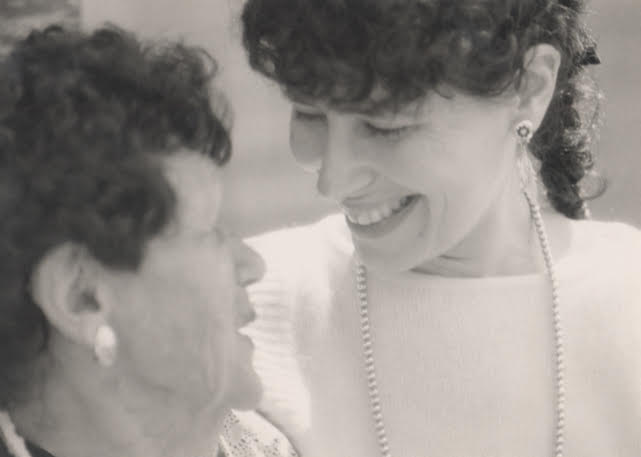One of the thrills of being a part of the children’s book community is meeting people like Leslea Newman, who has become both a friend and a mentor who has opened my eyes to the magic of historical fiction for kids. While my first book, The William Hoy Story, How a Deaf Baseball Player Changed the Game debuted three years ago, Leslea broke ground three decades ago with Heather Has Two Mommies in 1989, one of the first popular children’s books to show a family with two moms. Being a voice for those who needed one when voices like hers were being attacked is impressive enough. But Leslea has gone on to create a rich, full body of work that runs a wide gamut of subjects, from the serious to light-hearted.
If there’s a strand that connects Leslea’s books, it’s her love and support for ordinary people (and cats) who just want to enjoy their lives. While all her books her personal, woven with deep feelings and connection, her latest, Gittel’s Journey, an Ellis Island Story (with glorious illustrations by Amy June Bates), seems to hit the most close to home. This story of a young immigrant who must draw on all her courage when she finds herself alone on a boat making her way to Ellis Island is inspired by the stories of two of Leslea’s relatives.
As someone whose grandparents made similar journeys to America, I had lots of questions about how this beautiful book came to be and Leslea, being Leslea, graciously agreed to take the time to answer them all. Thank you, Leslea!
Leslea with her Aunt Phyllis, now 91, whose family stories helped inspire the book, illustrated by Amy June Bates and published by Abrams Books for Young Readers. Photo by Mary Vazquez
You’ve been a published author for three decades, with more than 70 books to your credit. You write for adults, teens and kids. You write poetry and prose. Did you know right away how you were going to tell Gittel’s Journey — whether it would be historical fiction, fiction or non-fiction, poetry or prose, a picture book or for older readers?
Leslea: I knew right away that it would be a story for children and that it would be fiction. And of course, since it is based on a true story, it would be historical fiction by default. I didn’t know at first whether it would be a picture book or a chapter book. It turned into a picture book with a fair amount of text. Several members of my writers group suggested that I turn it into a chapter book, but I really felt that it needed a substantial amount of art to support the text. Amy June Bates did an amazing job.
“You must be very brave, Gittel. Take this.” — from Gittel’s Journey by Leslea Newman, illustrated by Amy June Bates (Abrams Books for Young Readers)
Do you usually know how you are going to tell a story and who the audience will be?
I let the writing lead me to where it wants to go. Sometimes I know how a story is going to take form, but more often, I am greatly surprised. That’s the fun part of writing!
Can you tell us about your journey to Gittel’s Journey? When did you first become aware of the family stories that inspired your book?
The story about my grandmother Ruth Levin's journey to America and the story of my godmother Aunt Phyllis' mother Sadie Gringrass are engraved on my bones. I grew up with these stories. I have known them since the cradle.
Leslea and her Grandma Ruthie, who gave her the brass candlesticks that play a key role in the book. Leslea continues to light candles in them on Shabbos. Taken in 1989 by Sue Tyler.
Why do you think it took you so long to turn this story into a book? How do you feel it reflects on issues that America is wrestling with now? Is it coincidental or intentional that Gittel’s Journey reminds America of young, hopeful immigrants of yesterday at a time when immigrants are increasingly under attack today?
We are all treasure chests full of stories. Sometimes something triggers one of those stories that has been lying dormant to wake up and demand to be told. In this case, I saw a photo of Syrian refugees on a small boat off the coast of Turkey. Their faces were full of fear, hope, longing, and sorrow. And all of a sudden the stories of my ancestors’ journeys flashed before my eyes. Of course Gittel’s Journey has great relevance to what is going on today. At the start of the 1900’s, there were many issues concerning immigrants just as there are right now. I suppose there will always be people who are generous and welcoming, and unfortunately, there will always be people who are just the opposite. I think that unwillingness to make room for others stems from fear. I hope that kindness will win in the end.
I am honored to have been the recipient of one of your wonderful critiques. I remember one thing that made me laugh but then think more deeply was your advice to limit if not eliminate the use of exclamation points. The more I thought about it, the more I thought how that fits into the type of people you write about. You don’t tend to write about “exclamation point” people — people who draw a lot of attention to themselves. Instead, from Heather in Heather Has Two Mommies to Gittel in Gittel’s Journey, you write about the quiet beauty of people trying to live their lives with love and hope. What do you — and we -- learn from focusing on everyday people as opposed to famous people?
We are all people. I don’t think there are “People” with a capital “P” and people with a lower case “p.” Everyone has an interesting story to tell and we can all learn a great deal from each other. The key is listening with an open heart.
Where do you find the details for your books, things like the heavy woolen skirt and sweater, the two apples, hunk of bread, wedge of cheese, the donkeys and horse-drawn carts, the scratchy straw mattress on the ship? Do you store notes about these details and refer to them while you write?
I love love love doing research. When I’m writing a story I keep the forward momentum going, so if I need a detail that I don’t have, I leave a blank space and come back to it later. In the case of Gittel’s Journey, I read books that contain oral histories of people who immigrated around the same time as my ancestors, I spent a lot of time on the Ellis Island website, and best of all I went to Ellis Island which has a fantastic museum.
Leslea’s Ketzel the Cat Who Composed was also illustrated by Amy June Bates. (Candlewick)
Did you have any input into the gorgeous illustrations by Amy June Bates? Were you surprised when you saw them? What feelings did they evoke for you?
I did not give Amy any input. She had illustrated a book of mine previously (Ketzel, The Cat Who Composed) and she’d done such a fantastic job with it, I knew the art work for Gittel’s Journey would also be quite beautiful. But I didn’t know just how beautiful it would be! Amy surpassed all my expectations. The way she visually captures the emotions of the characters is truly stunning. When I showed the book to my Aunt Phyllis (the real Gittel’s daughter) she was so moved, she cried.
What has surprised you most on your journey with this book? What has made you happiest? Has any part of it been difficult or sad?
What has made me happiest is sharing the book with my Aunt Phyllis, her sons, her grandsons, and her great-grandchildren. I am very sad that my grandmother and my parents did not live to see this book.
The brass candlesticks that Leslea’s Grandma Ruthie brought from the Old Country and gave to her. Photo by Mary Vazquez.
Please share your feelings about the candlesticks that your Grandma Ruthie gave to you that inspired the ones that Gittel brings with her to America. Now, when you light them on Shabbos, do they feel any different now that they are stars of your book? (Do they know they are stars of your book?)
I love the idea of my grandmother’s candlesticks being “stars.” My grandmother gave me her Shabbos candlesticks when she was 99 years old and knew that she was at the end of her life. I always think of her when I light candles and sing the blessing on Friday night. Having her candlesticks appear in a book doesn’t change that. She has been gone for 30 years and I miss her every day.
What inspired you to combine the story of your Grandma Ruthie’s candlesticks with the story of your beloved Aunt Phyllis, to whom you dedicate the book: For Aunt Phyllis — I love you to pieces!
It’s hard to answer this question. Writing is very much an intuitive process, and this just felt right. The more one writes, the more one learns to trust one’s intuition. Either something feels right or it doesn’t. So in this case, I asked myself, what would a mother and daughter bring with them from the Old Country to America? And I wanted them to bring something that reminded them of home and was of great emotional value. So I gave Gittel a doll that belonged to her best friend, and I gave her mother a pair of Shabbos candlesticks. And of course when Gittel and her mother get separated and it turns out that Gittel has to make the journey alone, the candlesticks become even more important, as they are Gittel’s link to her family.
Sadie Gringrass (the real Gittel), courtesy of Phyllis Rubin.
Do you have any presentations or events coming up for Gittel’s Journey? What books can we look forward to next?
I have made a short documentary called “We Are A Country of Immigrants” which is basically a conversation between my Aunt Phyllis and me about her mother’s journey, what is was like for her to be the child of immigrants, how she feels about what is going with immigration today, etc. Since my aunt is in her 90’s, she can’t travel around with me to speak about the book (though we did have a wonderful event at the Jewish Community Center of which she is a member). I made the film so others could “meet” her. I have some presentations coming up at various schools, synagogues, and Jewish Community Centers in the coming year.
Leslea’s new book, Welcoming Elijah, A Passover Tale with a Tail is illustrated by Susan Gal and published by Charlesbridge. It comes out in 2020.
And, speaking as someone owned by two cats, can you tell us about YOUR cat and which of your cat books is the favorite in your house?
I am owned by a beautiful cat named Neshama, which is the Hebrew word for soul. And just as I could never choose a favorite cat (I have had many) I could never choose a favorite cat book. I do have a cat book coming out in January 2020 called Welcoming Elijah: A Passover Tale With A Tail which takes place on the first night of Passover.
Want to know more about Leslea Newman? You can visit her here:
Website: lesleakids.com
Abrams Books: abramsbooks.com
Twitter: @lesleanewman








